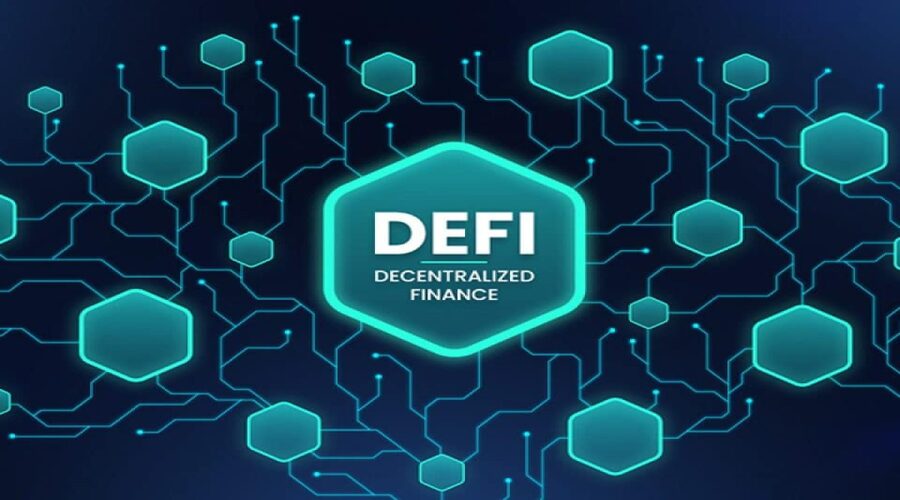
DeFi Ecosystem Analysis: Evaluating the Security of Different Projects
- summy Morphe
- May 15, 2023
- Defi
- DeFi, DeFi ecosystem, DeFi security
- 0 Comments
The decentralized finance (DeFi) ecosystem offers exciting opportunities for users to participate in a variety of financial activities. However, as the ecosystem evolves, it becomes crucial to evaluate the security measures implemented by different projects. Assessing the security of DeFi projects before investing is essential to protect user funds and ensure a safer ecosystem. In this article, we will explore the importance of analyzing project security, key security considerations, and methodologies for evaluating the security of different DeFi projects.
Introduction to DeFi Ecosystem Analysis
The DeFi ecosystem is continuously expanding, offering a range of projects with varying levels of security measures. Conducting a thorough analysis of project security is vital to make informed investment decisions and mitigate potential risks. Evaluating aspects such as smart contract audits, team expertise, protocol architecture, and security incident response protocols helps users identify projects that prioritize security and demonstrate a commitment to protecting user funds.
Security Considerations in DeFi Projects
When evaluating the security of DeFi projects, several key considerations come into play:
- Smart Contract Audits and Code Quality
Smart contracts serve as the foundation of many DeFi projects. Conducting comprehensive smart contract audits helps identify vulnerabilities, bugs, or potential attack vectors. Assessing the quality of code and the scope of audits conducted by reputable auditing firms is crucial in evaluating the security of the project.
- Team Expertise and Transparency
The expertise and experience of the project team play a significant role in ensuring the security of DeFi projects. Evaluating the backgrounds of team members, their previous contributions, and experience in the blockchain space provides insights into their ability to develop and maintain secure protocols. Transparency in project documentation, decision-making processes, and community engagement are additional factors to consider.
- Protocol Architecture and Decentralization
Understanding the underlying technology and architecture of a DeFi project is essential for assessing its security. Analyzing the protocol’s architecture helps identify potential vulnerabilities or attack vectors. Additionally, evaluating the level of decentralization and control within the project provides insights into the robustness of its security measures.
- Security Incident Response and Bug Bounty Programs
The ability of a project to respond to security incidents is crucial for minimizing the impact of potential breaches. Evaluating the project’s incident response protocols, including communication channels, bug triaging, and patch deployment, helps assess their preparedness and responsiveness. Furthermore, the existence and effectiveness of bug bounty programs demonstrate the project’s commitment to community-driven security and incentivize researchers to identify and report vulnerabilities.
Evaluating Smart Contract Audits

Smart contract audits are a critical aspect of assessing the security of DeFi projects. When evaluating audits, consider the following:
Importance of Smart Contract Audits
Smart contract audits provide an independent evaluation of code quality, security vulnerabilities, and adherence to best practices. Audits help identify potential issues before the contract is deployed, reducing the risk of exploitation and financial losses.
Assessing the Scope and Depth of Audits
Evaluate the scope and depth of the audit conducted. Assess whether the audit covers all critical functionalities and potential attack vectors. A thorough and comprehensive audit provides higher confidence in the project’s security.
Reviewing Audit Reports and Recommendations
Carefully review audit reports and recommendations provided by the auditing firm. Understand the identified vulnerabilities, their severity, and the recommended mitigation measures. Assess whether the project has addressed the identified issues or has plans to address them in subsequent versions.
Checking for Subsequent Audits or Upgrades
Review whether the project has undergone subsequent audits or upgrades following the initial audit. Ongoing security assessments and improvements demonstrate the project’s commitment to maintaining a secure protocol and addressing any identified vulnerabilities.
Assessing Team Expertise and Transparency
The expertise and transparency of the project team are crucial indicators of a project’s security. Consider the following factors:
Evaluating Team Backgrounds and Experience
Assess the experience and qualifications of the project team. Look for relevant experience in blockchain development, security, or finance. Verify team members’ backgrounds and previous contributions to the blockchain community.
Transparency in Project Documentation and Decision-Making
Transparency in project documentation, including whitepapers, technical specifications, and development roadmaps, is vital. Evaluate whether the project communicates its goals, features, and security measures clearly to the community. Transparent decision-making processes and community involvement also indicate a commitment to accountability and security.
Open-Source Development and Community Involvement
Projects that embrace open-source development allow the community to review the code and identify potential vulnerabilities. Consider the project’s engagement with the community, the acceptance of external contributions, and the responsiveness to security concerns raised by the community.
Analyzing Protocol Architecture and Decentralization
Understanding the protocol architecture and its level of decentralization is crucial in assessing security. Consider the following:
Understanding the Underlying Technology and Consensus Mechanism
Evaluate the technology stack and consensus mechanism used by the protocol. Understand the level of decentralization achieved through the consensus mechanism and the extent to which it protects against single points of failure or malicious attacks.
Assessing the Level of Decentralization and Control
Evaluate the distribution of control and decision-making power within the protocol. Assess the level of influence that centralized entities or individuals hold over the protocol. A higher level of decentralization reduces the risk of collusion or manipulation.
Identifying Potential Attack Vectors or Vulnerabilities
Analyze the protocol’s attack surface and potential vulnerabilities. Consider the economic incentives, consensus mechanisms, and potential security risks associated with the protocol. Identify any vulnerabilities or weaknesses that may expose user funds to risks.
Security Incident Response and Bug Bounty Programs
The project’s security incident response protocols and bug bounty programs are crucial for maintaining a secure DeFi ecosystem.
Reviewing the Project’s Security Incident Response Process
Assess the project’s incident response process, including how they communicate and handle security incidents. Look for clear communication channels, timely notifications, and a well-defined process for addressing and resolving security issues. A robust incident response process demonstrates the project’s commitment to mitigating security risks.
Assessing the Existence and Effectiveness of Bug Bounty Programs
Bug bounty programs incentivize security researchers to discover and report vulnerabilities in exchange for rewards. Evaluate whether the project has established a bug bounty program and assess its effectiveness. A well-structured bug bounty program encourages community involvement, promotes responsible disclosure, and fosters continuous security improvement.
Analyzing the Community’s Engagement in Reporting and Addressing Security Issues
Consider the level of engagement and responsiveness of the community in reporting and addressing security issues. Active community involvement in identifying vulnerabilities and collaborating with the project team to address them is a positive sign of a vigilant and security-conscious ecosystem.
Case Studies: Security Analysis of Prominent DeFi Projects
In this section, we will delve into case studies to provide practical examples of security analysis in prominent DeFi projects. Analyze the security measures implemented in decentralized exchanges (DEX), lending and borrowing protocols, and decentralized stablecoins. Assess their smart contract audits, team expertise, decentralization levels, and incident response processes to gain insights into their security practices.
DeFi Auditing Firms and Security Standards
DeFi auditing firms and security standards play a significant role in ensuring the security and reliability of DeFi projects.
Role of Auditing Firms
Auditing firms specialize in assessing the security and functionality of smart contracts and DeFi protocols. They conduct thorough code reviews, vulnerability assessments, and penetration testing to identify potential weaknesses or vulnerabilities. Engaging reputable auditing firms enhances the overall security of DeFi projects and instills confidence in users.
Key Auditing Firms
There are several well-established auditing firms in the DeFi space, such as CertiK, OpenZeppelin, ConsenSys Diligence, and Trail of Bits. These firms have extensive experience in auditing smart contracts and protocols, providing in-depth analysis and recommendations to enhance security.
Security Standards and Frameworks
Various security standards and frameworks have emerged in the DeFi ecosystem to provide guidelines and best practices for project security. Some notable standards include the Ethereum Security Recommendations (ESR), the ConsenSys Diligence Best Practices, and the OpenZeppelin Contracts Security Standard. These standards cover areas such as code quality, secure development practices, and secure contract design.
DeFi Insurance Protocols
DeFi insurance protocols provide an additional layer of protection for users’ funds, mitigating the risks associated with potential hacks or protocol failures.
How DeFi Insurance Works
DeFi insurance protocols pool funds from users who purchase insurance coverage. In the event of a security breach or hack, affected users can file claims to recover their losses. Insurance protocols use a combination of risk assessment, underwriting, and financial models to determine premiums and coverage limits.
Benefits of DeFi Insurance
DeFi insurance provides users with peace of mind by offering protection against unforeseen events. It helps mitigate the risks associated with smart contract vulnerabilities, protocol exploits, or malicious attacks. Insurance coverage encourages user participation in DeFi by reducing the fear of losing funds due to security incidents.
Notable DeFi Insurance Protocols
Several DeFi insurance protocols have emerged in the ecosystem, such as Nexus Mutual, Cover Protocol, and Armor Finance. These protocols offer different types of coverage, including smart contract cover, protocol cover, and yield cover, allowing users to choose the level of protection that suits their needs.
Security Token Offerings (STOs) in DeFi
Security Token Offerings (STOs) represent a regulated approach to tokenized investments, providing additional security measures for investors.
What are STOs?
STOs are fundraising events in which tokenized securities or investment contracts are offered to investors. STOs are subject to regulatory compliance, and tokens issued through STOs often represent ownership rights, profit-sharing, or other financial benefits.
Enhanced Security in STOs
STOs provide enhanced security compared to some other forms of token offerings. The regulatory compliance requirements associated with STOs ensure transparency, investor protection, and adherence to legal frameworks. The securities regulations aim to prevent fraud, promote transparency, and enforce reporting obligations.
Considerations for Investing in STOs
When considering investing in STOs, users should evaluate the project’s compliance with securities regulations, the credibility and track record of the issuing entity, and the transparency of the investment terms. It’s essential to conduct thorough due diligence and seek legal advice to ensure compliance with local laws and regulations.
Cross-Chain Interoperability and Security
Cross-chain interoperability allows assets and data to move seamlessly between different blockchain networks, but it also introduces security considerations.
Interoperability Protocols
Interoperability protocols such as Polkadot, Cosmos, and Avalanche enable communication and asset transfers between disparate blockchains. These protocols provide bridges, gateways, or cross-chain communication channels, allowing users to interact with assets across multiple networks.
Conclusion
Evaluating the security of different DeFi projects is crucial to safeguard user funds and ensure the long-term viability of the ecosystem. By considering factors such as smart contract audits, team expertise, protocol architecture, security incident response, and bug bounty programs, users can make informed decisions and invest in projects that prioritize security. Conducting a thorough security analysis contributes to a more secure and resilient DeFi ecosystem.


